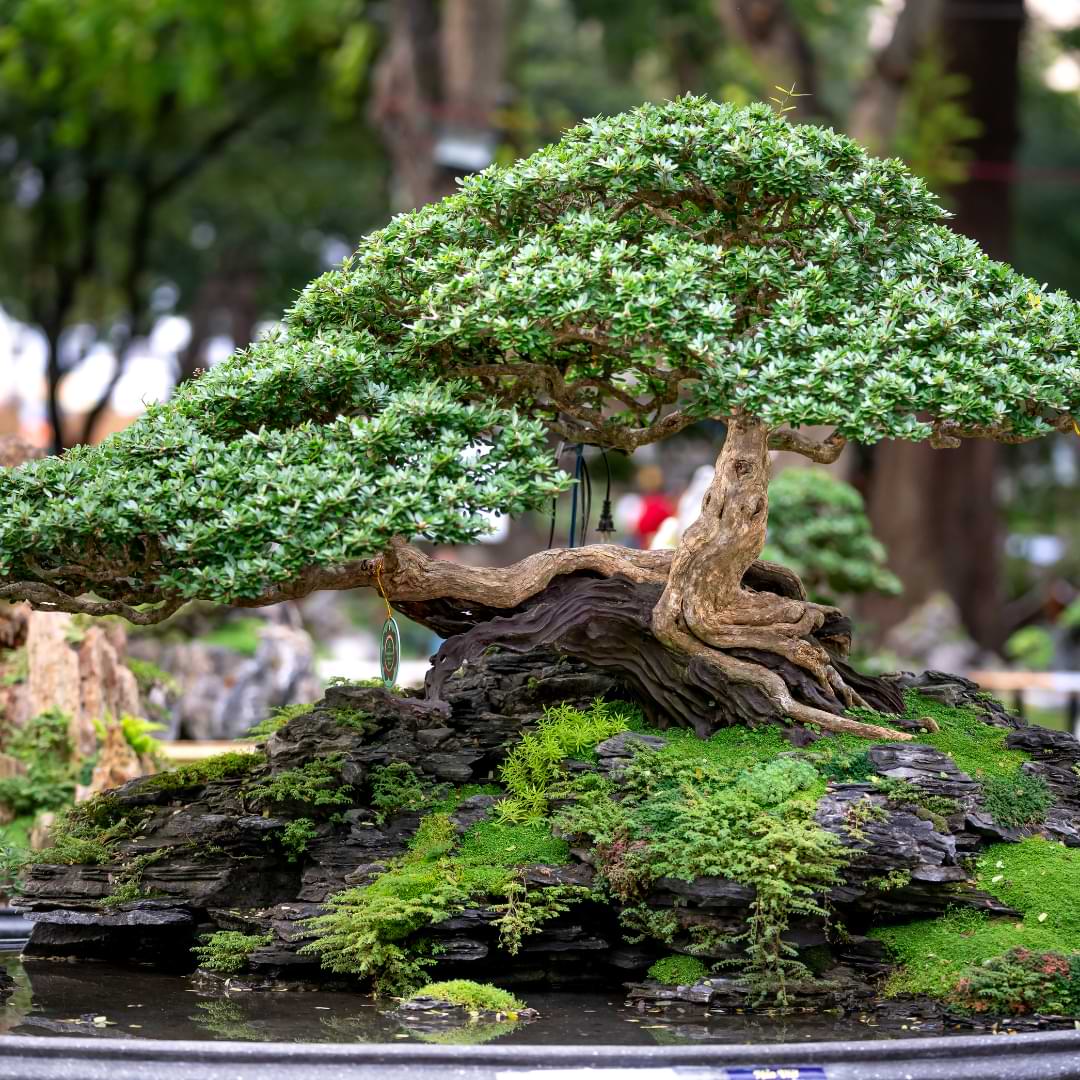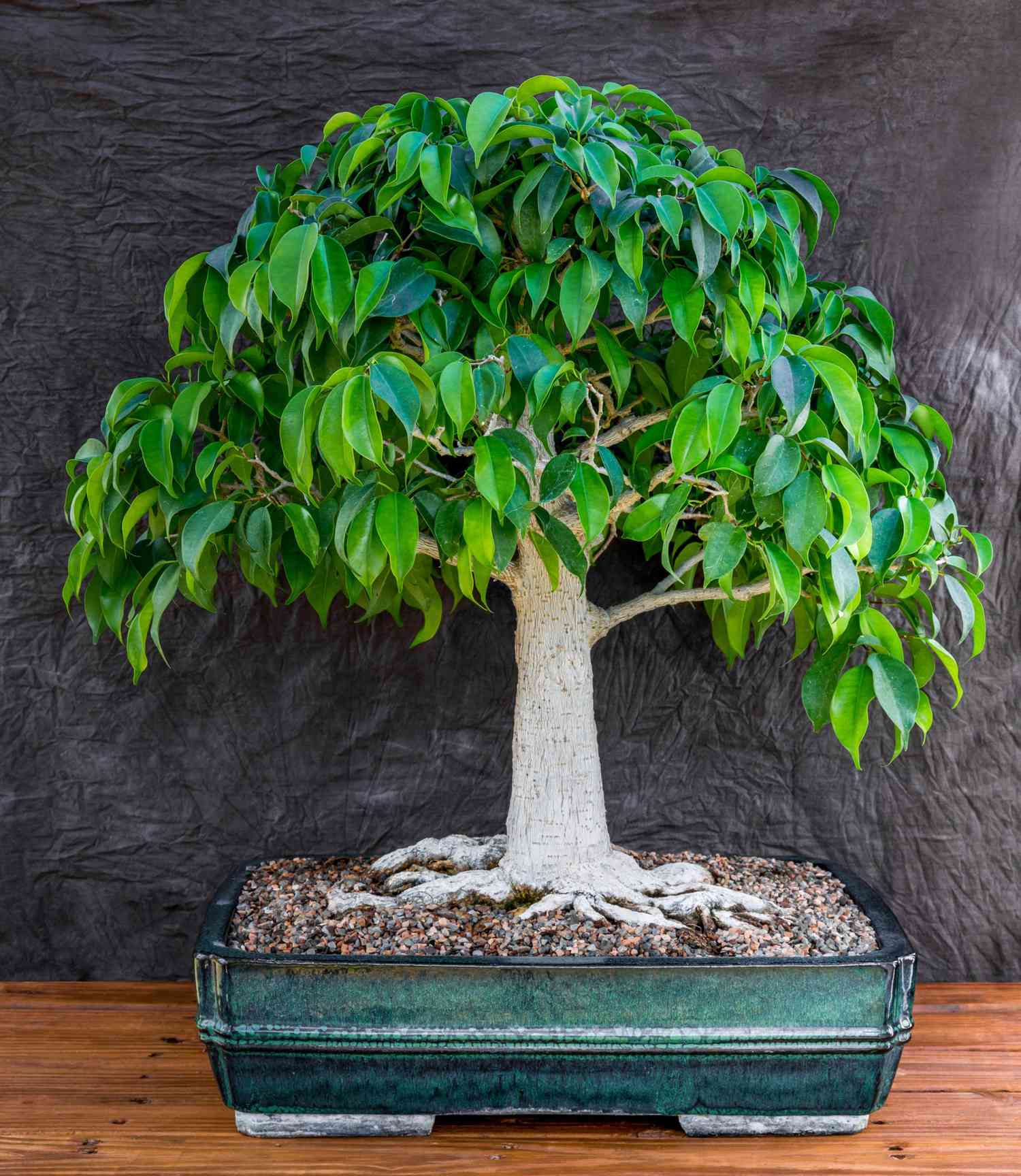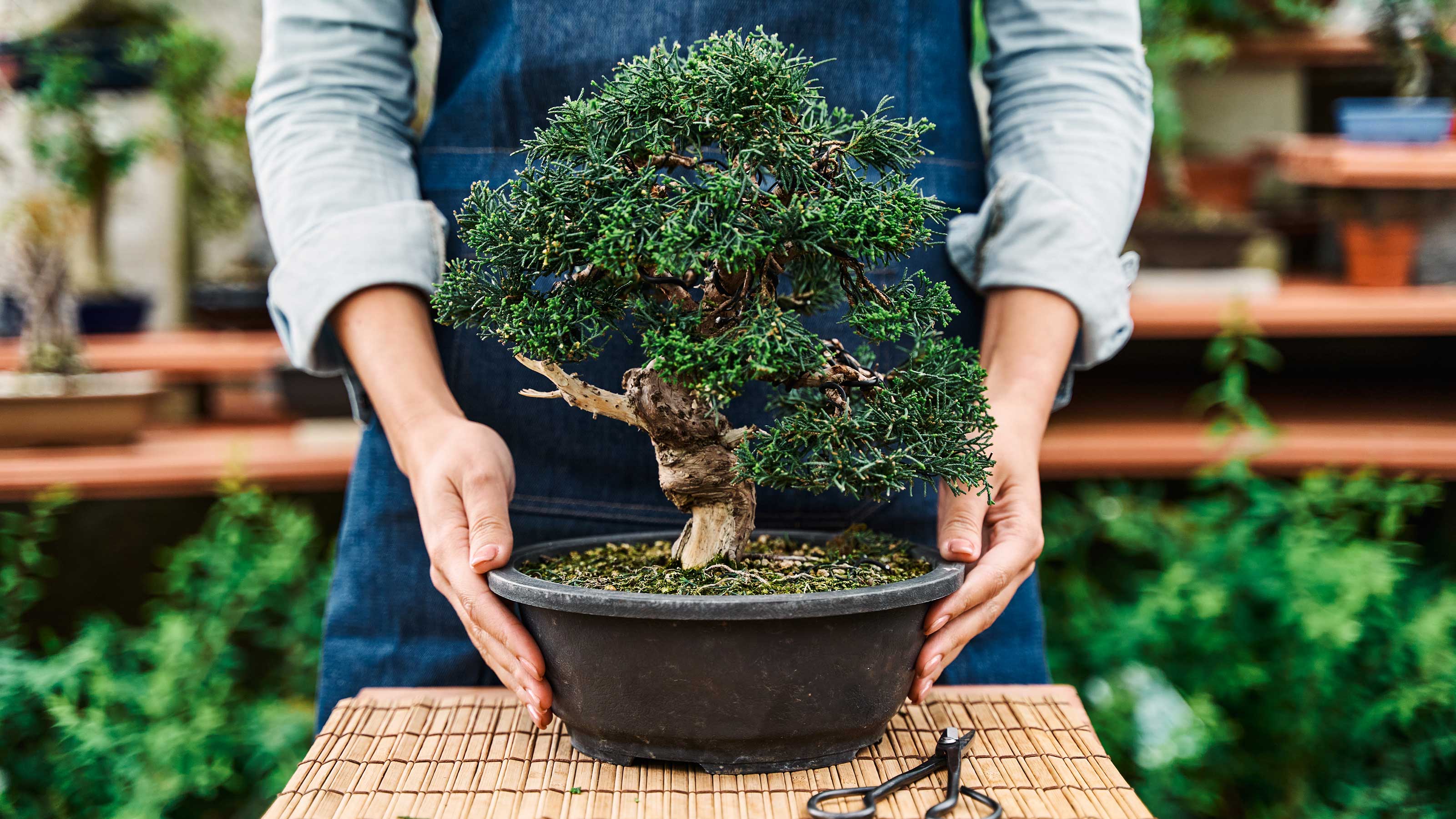Have you ever been captivated by the beauty and tranquility of a bonsai tree? These miniature masterpieces have a unique appeal, and the secret to growing and maintaining a beautiful bonsai lies in the art of cultivation. In this article, we will delve into the world of bonsai trees and uncover the secrets that will help you create and nurture your very own stunning bonsai.
From selecting the right tree to shaping and pruning techniques, we will guide you through each step, sharing expert advice, personal insights, and practical tips along the way. So if you’re ready to embark on a journey of botanical beauty, join us as we uncover the secret to growing beautiful bonsai trees.

Choosing the Right Bonsai Tree
When it comes to choosing the right bonsai tree, there are several factors to consider. First and foremost, it’s important to research the different types of bonsai trees available. Each species has its own unique characteristics and requirements, so it’s crucial to choose one that suits your preferences and skill level.
Next, take into account the climate and environmental factors in your area. Some bonsai trees thrive in warmer climates, while others prefer cooler temperatures. Additionally, consider factors such as humidity, wind, and sunlight exposure. By understanding your local climate and environmental conditions, you can choose a bonsai tree that will thrive in your specific location.
Lastly, evaluate your skills and experience level. Bonsai trees require care and attention, so it’s important to choose a tree that matches your abilities. If you’re a beginner, opt for a species that is more forgiving and easier to care for. On the other hand, if you have experience with bonsai trees, you can choose a more advanced species that requires a higher level of skill.
Preparing the Soil for Optimal Growth
The quality of the soil is crucial for the optimal growth of a bonsai tree. Understanding the importance of soil quality is the first step in preparing the soil for your tree. Bonsai trees require a well-draining soil that retains moisture without becoming waterlogged. This allows the roots to breathe and prevents root rot.
Testing and adjusting the pH level of the soil is another important step in soil preparation. Most bonsai trees prefer a slightly acidic to neutral pH level, so it’s essential to test the pH of your soil and make any necessary adjustments. This can be done by adding soil amendments such as lime or sulfur.
In addition to pH adjustment, adding organic amendments to the soil can provide essential nutrients for your bonsai tree. Organic materials such as compost, worm castings, and well-rotted manure can enrich the soil and promote healthy growth. It’s important to mix these amendments thoroughly into the soil to ensure an even distribution of nutrients.
Providing Adequate Light and Temperature
Proper light and temperature conditions are crucial for the health and growth of bonsai trees. Determining the ideal light conditions for your tree is the first step in providing adequate lighting. Most bonsai trees thrive in bright, indirect sunlight. However, it’s important to avoid exposing your tree to direct sunlight, as this can cause leaf burn.
In addition to light, temperature is another important factor to consider. Bonsai trees are typically grown indoors or in outdoor environments with controlled temperatures. It’s important to avoid exposing your tree to extreme heat or cold, as this can cause stress and damage to the tree. A temperature range of 60 to 75 degrees Fahrenheit is generally ideal for most bonsai species.
Creating good air circulation around your bonsai tree is also essential. This can be achieved by placing the tree in an area with good airflow, such as near a window or a well-ventilated room. Adequate air circulation helps prevent the buildup of moisture and reduces the risk of fungal diseases.
Watering Techniques for Bonsai Trees
Understanding the watering needs of your bonsai tree is crucial for its health and growth. Bonsai trees require a consistent level of moisture in the soil, but it’s important to avoid overwatering or underwatering. The frequency of watering depends on factors such as the species of the tree, the size of the pot, and the environmental conditions.
Using the right watering tools and techniques is also important. A watering can with a fine rose attachment is recommended for watering bonsai trees. This allows for a gentle and even distribution of water. It’s important to water the soil thoroughly until it drains out of the drainage holes at the bottom of the pot. This ensures that the entire root system receives water.
Avoiding overwatering is crucial, as it can lead to root rot and other fungal diseases. On the other hand, underwatering can cause the tree to become dehydrated and lead to wilting and poor growth. It’s important to monitor the moisture level of the soil and adjust your watering schedule accordingly.

Pruning and Shaping Your Bonsai Tree
Pruning is an essential part of bonsai tree care and is necessary to maintain the desired shape and size of the tree. Learning the basic pruning techniques is important to ensure the health and aesthetics of your bonsai. Pruning involves removing unwanted branches, twigs, and foliage to create a balanced and pleasing shape.
Recognizing the ideal shaping style for your bonsai tree is another important aspect of pruning. Some common shaping styles include formal upright, informal upright, slanting, semi-cascade, and cascade. Each style has its own unique characteristics and requires specific techniques to achieve.
Regular maintenance pruning is necessary to keep your bonsai tree healthy and aesthetically pleasing. This involves the removal of dead or diseased branches, as well as the trimming of new growth to maintain the desired shape. Regular pruning promotes the development of a dense foliage canopy and encourages the growth of smaller leaves.
Wiring and Training Your Bonsai Tree
Wiring is a technique used to train the branches and trunk of a bonsai tree into the desired shape. Understanding the purpose of wiring is essential for successful bonsai training. Wiring allows you to manipulate the growth of the tree by gently bending and shaping the branches and trunk.
Mastering the wiring techniques takes practice and patience. It’s important to use the right type and thickness of wire for your specific tree species. Copper wire is often used for bonsai wiring due to its flexibility and strength. The wire should be wrapped around the branch or trunk in a spiral motion, applying gentle pressure to guide its growth.
Training the branches and trunk of your bonsai tree is another important aspect of bonsai care. This involves regularly adjusting the position of the wired branches and trunk to maintain the desired shape. It’s important to monitor the growth of the tree and make adjustments as needed to ensure proper development.
Feeding and Fertilizing Your Bonsai Tree
Proper feeding and fertilizing are essential for the health and growth of your bonsai tree. Choosing the right fertilizer for your bonsai is the first step in providing the necessary nutrients. There are different types of fertilizers available, including organic and inorganic options. It’s important to choose a fertilizer that is specifically formulated for bonsai trees.
Understanding the nutrient requirements of your bonsai tree is crucial. Bonsai trees require a balanced combination of nitrogen, phosphorus, and potassium, as well as other essential micronutrients. The fertilizer should be applied according to the instructions on the package, taking into account the size and age of the tree.
Developing a feeding schedule is important to ensure consistent nutrient supply for your bonsai tree. Most bonsai trees require regular feeding during the growing season, typically from spring to fall. It’s important to monitor the growth and health of your tree and adjust the feeding schedule as needed.
Protecting Your Bonsai Tree from Pests and Diseases
Bonsai trees are susceptible to various pests and diseases, so it’s important to take preventive measures to protect your tree. Identifying common bonsai pests and diseases is the first step in pest management. Some common pests include aphids, scale insects, and spider mites, while common diseases include root rot and fungal infections.
Implementing preventive measures is crucial to minimize the risk of pest and disease infestations. This can be done by maintaining good hygiene practices, such as regularly cleaning the leaves and removing fallen debris from the pot. Additionally, inspect your bonsai tree regularly for any signs of pests or diseases and take immediate action if necessary.
Using organic pest control methods is recommended to minimize the use of chemicals on your bonsai tree. These methods include the use of predatory insects, such as ladybugs, to control pests, as well as the use of organic insecticidal soaps and neem oil. These natural solutions are safer for both the tree and the environment.
:max_bytes(150000):strip_icc()/how-to-grow-bonsai-tree-getty-0823-1b85885276d44e7586be6ee7a062465d.jpg)
Repotting Your Bonsai Tree
Knowing when and why to repot your bonsai tree is important for its overall health and development. Bonsai trees typically need to be repotted every 1 to 3 years, depending on their growth rate and the size of the pot. Repotting helps refresh the soil, prevent root-bound conditions, and promote healthy root growth.
Selecting the right potting mix is crucial for successful repotting. Bonsai trees require a well-draining soil mix that allows for proper water and air circulation. A common bonsai soil mix consists of a combination of organic matter, such as compost or bark, and inorganic matter, such as perlite or pumice.
Proper repotting techniques should be followed to minimize stress and damage to the tree. Carefully remove the tree from its old pot, gently untangle the roots, and trim any circling or damaged roots. Place the tree in the new pot, ensuring that it is centered and at the appropriate height. Fill the pot with the new soil mix, gently pressing it down to eliminate air pockets.
Displaying and Presenting Your Bonsai Tree
Choosing the right display stand is important to showcase the beauty of your bonsai tree. The stand should complement the aesthetics of the tree and enhance its overall presentation. There are a variety of display stands available, ranging from simple wooden stands to more elaborate designs made from materials such as stone or metal.
Enhancing the aesthetics of your bonsai tree with accessories can add a unique touch to its display. Accessories such as miniature figurines, moss, and rocks can be strategically placed to create a harmonious and natural environment for your bonsai. It’s important to choose accessories that complement the style and theme of your bonsai tree.
Creating a harmonious display involves considering the arrangement of your bonsai tree and its surroundings. The placement of the tree should be carefully chosen to emphasize its natural beauty. Consider factors such as lighting, background, and other elements in the display area to create a visually pleasing and balanced composition.
In conclusion, growing and caring for a bonsai tree requires knowledge, skill, and patience. By choosing the right tree, preparing the soil, providing adequate light and temperature, mastering pruning and shaping techniques, and implementing proper feeding and pest control measures, you can create a beautiful and healthy bonsai tree that will bring joy and tranquility to your life.



